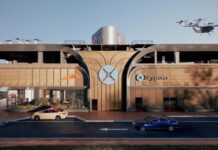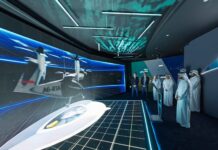By Khalaf Al Habtoor, Special to Gulf News www.gulfnews.com
Wednesday, September 9, 2009 marked yet another milestone in Dubai’s spectacular progress. That was the day that His Highness Shaikh Mohammad Bin Rashid Al Maktoum, Vice President and Prime Minister of the UAE and Ruler of Dubai, inaugurated the Dubai Metro – the world’s longest automated driverless train system – before travelling on the Red Line himself.

The celebratory atmosphere throughout the emirate could be felt days afterwards as locals and expatriates alike queued to experience the Metro first hand, when they invariably reached their destinations feeling positive and excited.
This was Shaikh Mohammad’s dream, his vision, which he held to unwaveringly in the face of sceptics who said the project wasn’t financially feasible. As always, he put quality of life before immediate fiscal revenues. With a certainty born of experience, he forged ahead in the knowledge that making life better for people attracts enterprise, investment and tourism, which together infuse the overall economy with new energy.
On the footpath of his father, the late Ruler of Dubai Shaikh Rashid Bin Saeed Al Maktoum, Shaikh Mohammad is a master of anticipating future trends. Many of us still remember the general disbelief when Shaikh Rashid commenced building Dubai’s dry docks at a time when most visiting vessels were dhows.
Some were even more incredulous when he commissioned the Dubai World Trade Centre to be the tallest building in the UAE. The sceptics believed it would remain a ghostly white elephant. “Major corporations are not going to relocate to a desert,” they said. But Shaikh Rashid was right and they were wrong.
This ‘can do’ spirit is the foundation on which Dubai was built and on which it still rests. The philosophy of Dubai’s rulers has always twinned ‘nothing is impossible’ with ‘nothing but the best’.
The Metro is not just a regional first. The initial phase comprising 10 stations was completed in a record time of just four years, while the Union Square Station spanning 25,000 square metres is the planet’s largest.
Beauty is in the eye of the beholder, but I have no doubt that anyone who has seen it will agree that our new Metro is also the world’s most visually appealing – not to mention one of the most scenic, with its bird’s eye views of the city.
Besides being something of which we can truly be proud, the Metro will bring tangible benefits to all who live and work here by slashing commuter times, freeing the roads from congestion, reducing pollution, and providing the lower-paid with freedom of movement during leisure hours.
It was constructed as part of an integrated transportation system encompassing flyovers, highways, seaports, airports, inter-Emirates buses, Metro-feeder buses, parking facilities, taxis and water-taxis. With the opening of the new rail system, there is no country on earth that can compete with the diversity and capacity of Dubai’s transportation infrastructure.
The successful unveiling of the Dubai Metro at a time of the global financial downturn also sends a powerful message to the rest of the world: Dubai is strong, confident and poised to expand even further. While some nations have chosen to pare down or postpone infrastructure projects as part of their recovery strategies, we have chosen to invest in tomorrow.
In 2012, the Metro’s Purple Line is scheduled to be operational. This will link Dubai International Airport with Al Maktoum International Airport, the first phase of which will be completed next year.
Projected to be fully built and operational by 2017, it will be the biggest airport in the world and will break records as the most expensive project ever. It’s hard to imagine, but it will be 10 times larger than Dubai International Airport, with six runways, three passenger terminals, and 16 cargo terminals, along with hotels and shopping malls.
As a testimony to Dubai’s great achievements, it is ranked the first city in the Middle East and Africa in terms of quality of living in Mercer’s highly recognised 2009 Quality of Living Survey. Moreover, and not surprisingly, it came first in Mercer’s infrastructure survey too.
Dubai doesn’t do anything by halves, which is probably why it attracts so much envy. We make no apologies for excellence or for our desire to do things better than everyone else. Elements in the Western press may sneer at our achievements, but if they think that we will opt for a low profile to avoid being a target, they should think again.
We’re confident because we know our strengths. Dubai is business-oriented, open, secure, dynamic and offers a safe haven for investment. And its strategic location means it will always be a trading hub linking Asia to the West.
Our city – nay, our metropolis – stands as a beacon lighting a path to the future. Just when I think that Dubai can’t possibly get any better, it always does.
Parallel with Dubai, the capital is also upgrading its transportation infrastructure. Earlier this year, Abu Dhabi International Airport opened a luxurious new terminal. Another is set to be completed by 2012 and will increase passenger capacity to more than 20 million. Abu Dhabi also has a surface transport master plan in place that includes a Metro, high-speed passenger and freight railways, new highways and buses.
Together, President His Highness Shaikh Khalifa Bin Zayed Al Nahyan and Shaikh Mohammad make an unstoppable partnership, working in harmony for the welfare of their people and to ensure this great country attains its highest potential.
Khalaf Al Habtoor is a businessman and the chairman of Al Habtoor Group.



















